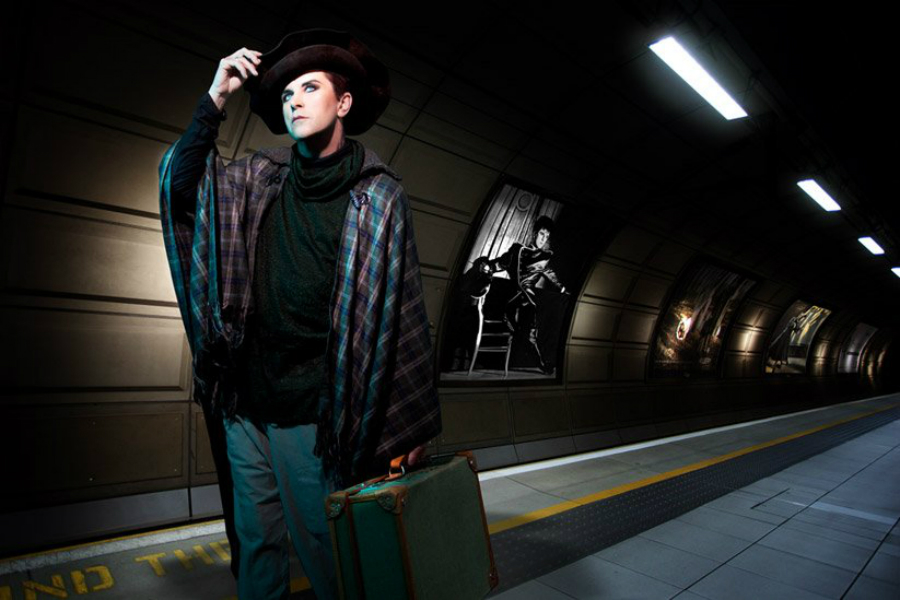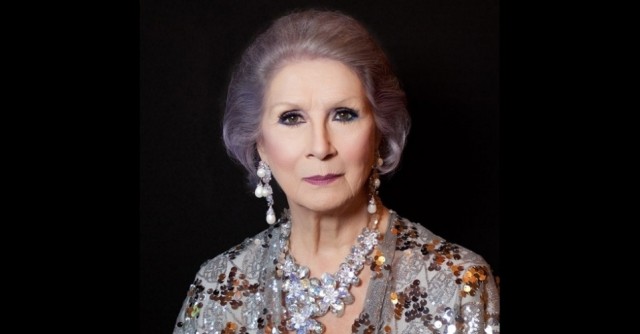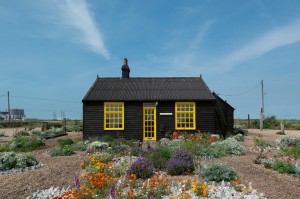This Way Out: The New Boy George

Popstar, rockstar, photographer, chameleon: Pete Goodbody puts aside his preconceptions and introduces himself to the new Boy George…
It’s Bonfire Night and Boy George is on Later with Jools. He’s sporting a beard that’s not quite Guy Fawkes, a large purple hat, mascara, and heavy gold chains around his neck. And he’s rocking. Proper rock music with drums, guitars and things. This is a very long way from Karma Chameleon indeed.
This new Boy George looks confident, assured and comfortable; he tells Jools he’s a clean living person now, drinking lots of water and getting back on his feet after well documented past troubles. There’s a new album and he’s touring it as well as DJ’ing. He’s a busy guy.
The time is right then for George to show us another aspect to his creative character. An exhibition of his photographs, This Way Out, is currently being shown at Camp and Furnace (as part of Homotopia Festival), demonstrating that he’s not too shabby at pressing a camera shutter. These are accomplished portraits of the people who do, or did, make up some of George’s inner circle.
Set amongst a series of Warholesque prints and paintings by Wirral-based graphic designer and friend, Trademark, they explore preconceived notions of gender and identity. Depicted here are ’80s trailblazers Adam Ant, Steve Strange (main image) and Tasty Tim; people for whom the image they project to the outside world is important, but who also don’t care what others think of them. They care what they look like, but are somehow indifferent to how most of the rest of society views them; being different is a large part of their persona.
These people, from punks to New Romantics, were instrumental in shaping the cultural world we know today. The words “It’s all Bowie’s fault” are stenciled on the wall. That’s a hefty charge, but you can see where George is coming from.

It is notable and entirely fitting that one of this country’s greatest LGBT icons is part of the show. George’s portrait of April Ashley (one of the first people in the world to undergo pioneering gender reassignment surgery), in which she is styled and made up to look like The Queen, is a striking one in its own right, in addition to being an obvious but effective joke. This is the first time George’s photography has been exhibited in public, and it is a reminder that things were very different not so long ago, and not in a good way.
Later in the evening, after I’d seen the exhibition, I went to St George’s Hall to hear Boy George talk about his work. I was looking forward to this; I’m interested in creative process and I wanted to know whether his intentions matched the message I had taken away from This Way Out.
On the same stage used by Charles Dickens to give readings in the 19th century, George was being interviewed by broadcaster Janice Long. That’s actually quite a big deal.
Inevitably, there was a good deal of reminiscing and talk of the ’80s; a decade for which George said he had great affection, although he also declared he preferred “the now”. The new album was a collection of music styles that he loved, mostly from the ’70s and ’80s (making sense to me of the way it’s put together and the mish mash of musical styles).
“I always wanted to be in a rock band”, he tells the audience, “but it didn’t work out that way”. Knowing what we do now, that might seem a surprising thing to hear, but with major lifestyle influences such as David Bowie, Marc Bolan, Patti Smith and Lou Reed, we start to get a clearer picture of what goes into making George tick.
He talked about the Blitz Club and the scene that was happening around it. “A small scene of self obsessed people” he said, and they certainly didn’t think about the social impact they were having at the time. But, years later, people would come up to George and thank him for what he did back then to change people and their attitudes towards the LGBT community. He gave people hope, and that made him immensely proud, albeit in retrospect. At the time, the punks and New Romantics weren’t thinking of altruism; they were just being themselves and having a good time. But it’s true, they did change things.
In conversation, George didn’t talk a great deal about This Way Out, probably because he wasn’t asked much about it. He told us he wasn’t interested much in the reality of the photos (some of them are heavily edited), he just wanted to make people look glamorous — to show off their exaggerated personas. But the exhibition goes further than that; it’s confirmation that you don’t have to be normal to be accepted. And that wasn’t always the case.
The Guy Fawkes beard seems even more appropriate after this evening. He tells us that lots of people have said to him they hate it. He doesn’t care. For now that’s his look and he’s not bothered with what anyone else thinks. That is what he does.
Pete Goodbody
The exhibition This Way Out continues at Camp and Furnace until 25 November 2013, free entry
The main Homotopia Festival continues until end November 2013; see full programme here





